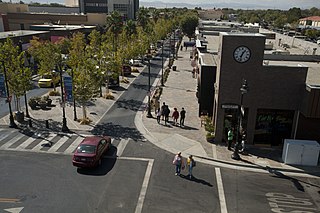
Lancaster is a charter city in northern Los Angeles County, in the Antelope Valley of the western Mojave Desert in Southern California. As of the 2010 census it had a population of 156,633, and in 2019 the population was estimated at 157,601, making Lancaster the 33rd largest city in California. Lancaster is part of a twin city complex with its southern neighbor Palmdale, and together they are the principal cities within the Antelope Valley region.

The Indigenous peoples of the Great Basin are Native Americans of the northern Great Basin, Snake River Plain, and upper Colorado River basin. The "Great Basin" is a cultural classification of indigenous peoples of the Americas and a cultural region located between the Rocky Mountains and the Sierra Nevada, in what is now Nevada, and parts of Oregon, California, Idaho, Wyoming, and Utah. The Great Basin region at the time of European contact was ~400,000 sq mi (1,000,000 km2). There is very little precipitation in the Great Basin area which affects the lifestyles and cultures of the inhabitants.

The Laguna Art Museum (LAM) is a museum located in Laguna Beach, California, on Pacific Coast Highway. LAM exclusively features California art and is the oldest cultural institution in the area. It has been known as the Laguna Beach Art Association, as well as the Laguna Beach Museum of Art.
Rob Clayton and Christian Clayton are painters based in California.
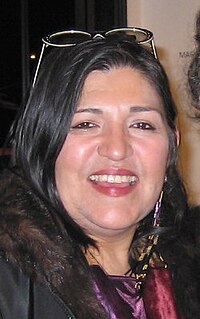
Linda Vallejo is an American artist known for painting, sculpture and ceramics. Her work often addresses her Mexican-American ethnic identity within the context of American art and popular culture. The founder of the commercial art gallery Galería Las Américas, she is also an arts educator and has been involved intraditional Native American and Mexican rituals and ceremonies for many years.
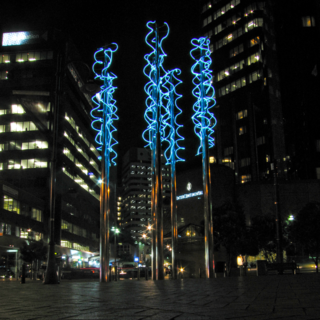
William Franklin Culbert was a New Zealand artist, notable for his use of light in painting, photography, sculpture and installation work, as well as his use of found and recycled materials.

The Broad is a contemporary art museum on Grand Avenue in Downtown Los Angeles. The museum is named for philanthropists Eli and Edythe Broad, who financed the $140 million building which houses the Broad art collections. The museum offers free general admission to its permanent collection galleries. It opened on September 20, 2015.

The Museum of American Heritage (MOAH) is a museum in Palo Alto, California. It is dedicated to the preservation and display of electrical and mechanical technology and inventions from the 1750s through the 1950s. The museum has a large collection of artifacts that are generally not accessible to the public. Selections from the collection are displayed in a historic house at 351 Homer Ave, Palo Alto, California. MOAH is a 501 (c) (3) non profit organization and a member of the American Alliance of Museums.
Linda Weintraub is an American art writer, educator and curator. She has written several books on contemporary art. Her most recent works address environmental consciousness that defines the ways cultures approach art, science, ethics, philosophy, politics, manufacturing, and architecture.

Rafael Reyes, also credited as Leafar Seyer, is an American author, artist and musician credited with creating the Cholo goth genre of music, which lyrically explores the harsh realities of gang and street life over throbbing beats and swirling synthesizers.
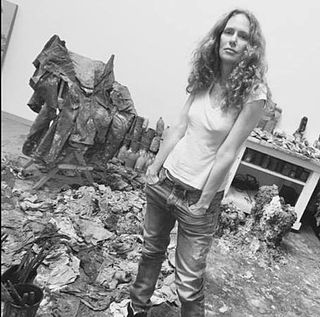
Fawn Rogers is an American contemporary multidisciplinary artist. She works within painting, photography, video, and sculptural installation. She has work shown in museums and galleries, alongside non-traditional locations on four continents.
Emilie Halpern is an American conceptualist artist. She works in ceramics, sculpture, room installations, film, photography and drawing.
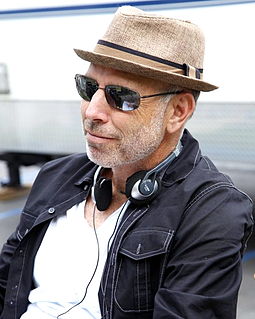
Scott Ehrlich is an American real estate developer, businessman and filmmaker. He is the principal and a partner of InSite Development, LLC which owns and manages 3500+ apartment units and 320,000 square feet of commercial throughout Southern California. He is best known for revitalization and redevelopment of downtown Lancaster, California.
Eric Minh Swenson, also known as EMS, is an American photographer, photojournalist and filmmaker, born in Honolulu, Hawaii, best known for his films on artists and exhibition. He has also focused on Southern California fine artists.
Jo Hanson (1918–2007) was an American environmental artist and activist based in San Francisco, California.
Andi Campognone is California-based curator, author, and film producer, known for championing contemporary Southern California artists.
Lisa Schulte is an American artist, also known as "The Neon Queen", who is best known for her work in expressive neon sculpture. Schulte started bending neon in the early 1980s, creating custom neon signs and neon prop rentals to the entertainment industry under her Los Angeles-based neon studio, Nights of Neon. She is recognized for working with light as an artist and designer, and owner of one of the largest neon collections in the world.
Aline Mare is an American visual artist, performing artist and filmmaker who creates photo-based, hand-finished, multimedia works combine alternative processes and digital technology, remixing nature-based imagery to create surreal compositions that hover between creation and decay.

Joshua Dildine is an American artist who was born in Mission Viejo, California. He received a BA from Pepperdine University in 2007 and an MFA in Studio Art from Claremont Graduate University in 2010.
Manuel López is an artist and educator based in Los Angeles, California. He is an emerging artist in the Chicano art scene and has shown his work at museums and galleries in Los Angeles, Chicago, and New York City. He specializes in traditional drawing and painting. López' cityscapes express the details he observes in his surroundings such as run down houses, palm trees, and silent and still neighborhoods. Along with his surroundings, he also expresses the memories he holds of the experiences within his area.











